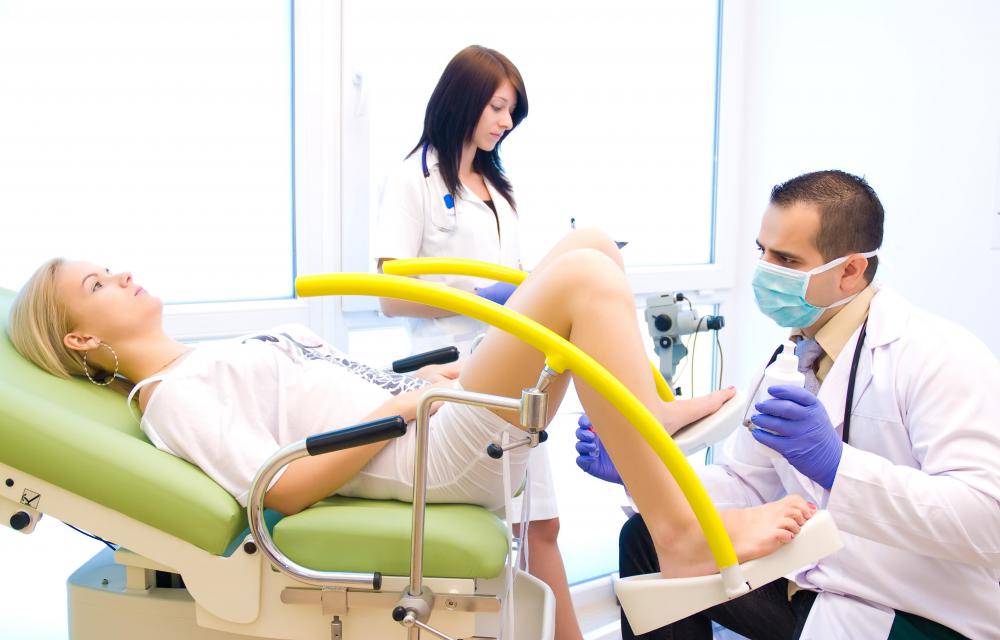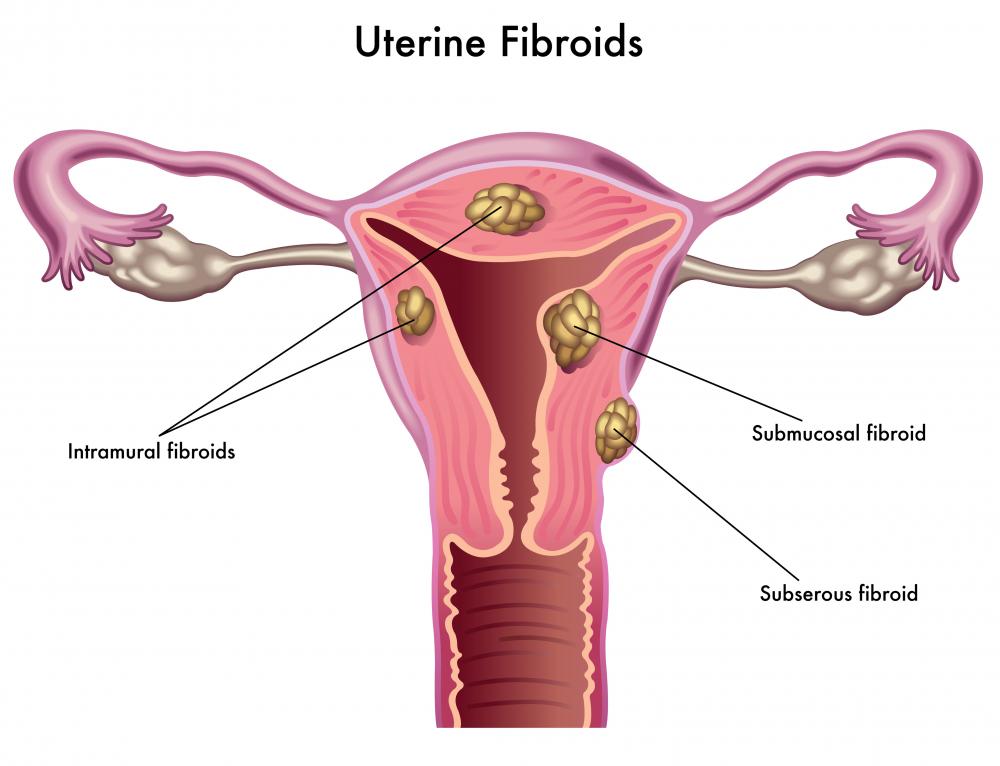At WiseGEEK, we're committed to delivering accurate, trustworthy information. Our expert-authored content is rigorously fact-checked and sourced from credible authorities. Discover how we uphold the highest standards in providing you with reliable knowledge.
What are the Different Causes of Chronic Pelvic Pain?
Chronic pelvic pain in women may be intermittent or constant, depending on the source of the discomfort. Many women and teenage girls experience mild to moderate cramping during their menstrual cycle, but the discomfort generally disappears after a few days. Diseases of the reproductive organs, however, often cause pain that is much more severe. Conditions such as endometriosis, ovarian cysts, uterine fibroids, or pelvic inflammatory disease are among most common causes of persistent chronic pelvic pain.
Endometriosis is a common diagnosis for women who suffer from chronic pelvic pain, especially during menstruation, and in the days leading up to it. In some cases, the pain can be felt at various times throughout the month, even when menstruation is still a few weeks away. Unlike normal periods that produce minor cramping, this condition creates excruciating, often crippling pelvic pain. It occurs when endometrial cells that are normally contained within the uterus are displaced outside the uterine wall. The tissue implants may attach to ovaries, fallopian tubes, the bladder, and even the intestines.

These endometrial implants, often microscopic in size, shed outside the uterus during monthly menstruation. The endometrial tissues become inflamed and chronic pelvic pain occurs as a result. It is usually diagnosed through exploratory laparoscopic surgery, at which time the surgeon ablates, or cauterizes, the implants. Other forms of treatment, besides surgery, may be considered when endometriosis is suspected. Hormone therapy, for example, may help ease symptoms.

Uterine fibroids may also be the source of chronic pelvic pain. These non-cancerous tumors can develop within the uterus. Fibroids, like endometriosis, are affected by the female sex hormone, estrogen, which is mostly produced by the ovaries. Sometimes, the ovaries themselves can cause discomfort, especially when ovarian cysts are present.
Although most women have ovarian cysts at one time or another, many of them never know it. This is because it does not always present any symptoms. The harmless occurrence usually resolves on its own. On occasion, however, a large cyst may develop, causing bleeding and pain. Endometriosis can also cause chocolate cysts to develop, which for some women, causes extreme discomfort.

Pelvic inflammatory disease (PID), an infection of the pelvic organs, may also trigger chronic pelvic pain, in addition to other serious complications. Certain sexually transmitted diseases are known to cause PID, such as gonorrhea and chlamydia, although not all cases occur because of it. Sometimes, bacteria infiltrates the uterus through the cervix and causes infection, which leads to PID. If this condition is discovered early, antibiotics can usually take care of the problem. Serious damage to the reproductive organs may occur if PID is left untreated. It is always important to visit a gynecologist for an accurate diagnosis for any pelvic pain.
AS FEATURED ON:
AS FEATURED ON:


















Discuss this Article
Post your comments